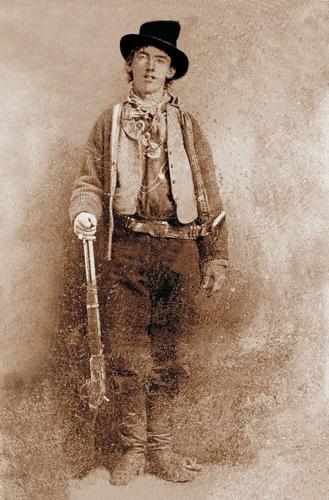 New Mexico Territory, in the 1860s to the end of the century, was known as quite a wild and dangerous place, largely due to the bands of marauding Apaches who made their resentment of the white man well known. The risk of travelers being tortured, killed, and kidnapped by bloodthirsty Apaches was not just the use of artistic license by Hollywood filmmakers; it was a real and immediate threat, particularly to the hordes of miners invading the territory in search of silver and gold.
New Mexico Territory, in the 1860s to the end of the century, was known as quite a wild and dangerous place, largely due to the bands of marauding Apaches who made their resentment of the white man well known. The risk of travelers being tortured, killed, and kidnapped by bloodthirsty Apaches was not just the use of artistic license by Hollywood filmmakers; it was a real and immediate threat, particularly to the hordes of miners invading the territory in search of silver and gold. Silver City had its share of notorious Apache warriors. This band of Native Americans differed quite drastically from the peaceful tribe of Pueblo Indians, the Mogollons, who settled the area in the 13th century. The Apaches, led alternately by Cochise, Victorio, Nana, and Geronimo, had learned to distrust the settlers who came for gold and silver ore, and with good reason. Living in relative peace until 1860, it was the white man who encroached upon their territory and attempted to force them out. The violent warrior Geronimo is said to have been born near the Gila Cliff Dwellings, at the headwaters of the Gila River outside Silver City, once home to the peace-loving Mogollons.
Beginning in 1861, Cochise joined the Hot Springs Apache band under Mangas Coloradas, who was determined to drive out “Los Godammies”, their term for white men. In September they attacked the mining camp of Pinos Altos. Captain Thomas Mastin, who defended the camp along with nine Arizona Scouts, was fatally wounded before they withdrew. Mangas Coloradas was captured in 1863 and killed a day later, on January 14th, at Fort McLane in Pinos Altos. The following day, his wife and ten of his followers were executed.
It was 1872 when the Apache leader, Cochise, was finally persuaded by the government to move his band to reservation land. At this time, the Chino Copper Mine finally began operating in full swing, lulled into a sense of security with Cochise out of the picture. Unfortunately, Geronimo took over where Cochise left off, but his capture in 1877 again allowed mining operations in Santa Rita, Mogollon, and Pinos Altos to continue uninterrupted and even expand. Geronimo was released in 1882.
In 1879, Victorio led a revolt against reservation life and took his tribe on raids which extended from the Rio Grande River, near Las Cruces, New Mexico, all the way to Arizona. Sgt. James Cooney, in Mogollon, became one of Victorio’s victims; the soldier turned miner was mutilated and killed in April of 1880. Victorio finally died in 1881, but his son-in-law, Nana took over where Victorio left off. Nana fought, and won, eight battles with troops of US soldiers before being sent to a reservation in eastern Arizona.
In the 1880s, troops of Buffalo Soldiers – so called by the Indians due to their curly black hair – were redeployed from the Llano Estacado of the eastern plains to southwestern New Mexico to control the escalating raids.
It didn’t take long for Geronimo to begin causing trouble once freed from the government’s control. The McComas Massacre occurred in 1883 in Silver City. Judge McComas and his wife were attacked by Geronimo and his band of Apache warriors. They were killed and their six-year-old son kidnapped and taken to Mexico.
Another escape occurred in 1885 as Nana and Geronimo left the reservation yet again, heading a band of Chiricahua Apache. These two fearsome leaders would wreak havoc in the southwest for one year before finally surrendering to US troops.
It has been said that Indian raids occurred in the southwest years long after the rest of the United States found peace. More than likely this was true and it was the main reason why New Mexico never developed as fully as many other states. It is great, however, for creating excitement works of fiction based on history. Although Geronimo does not show up in Golden Enchantment, there are some references to Apache raids.

